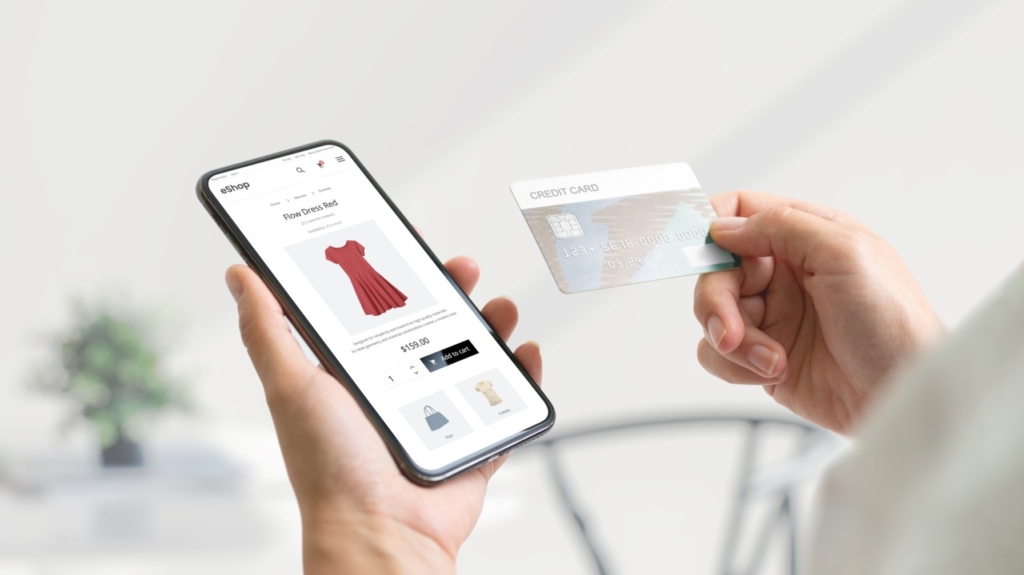Navigating Travel Industry Risks with Intelligent Communications
We’re going to explore some real-life unforeseen circumstances that the travel industry has had to navigate and how intelligent communications solut...

According to a PwC survey, 73% of customers stated that CX is the number one factor they consider when deciding whether to purchase from a company. The market is more competitive than ever before, so an outstanding product/service offering is no longer sufficient to attract and retain customers . Customer expectations have become increasingly complex, which requires businesses to become more innovative and provide an experience that goes above and beyond. In order to attract and retain customers, investing in your customer’s experience is incredibly important.
So, how can you provide customer experiences that satisfy your current customer base and attract new business? The answer is digital transformation. Leveraging digital technology can support many facets of your customers’ experience; from in-depth insights that help you to gain better understanding of their needs and expectations to digital solutions that enable you to act upon these insights to provide unforgettable experiences.
If you’re looking to ensure your business stays ahead of the rest, keep reading, as we’re going to outline the blueprint for using technology to provide unforgettable customer experiences.
This may seem like an obvious question, but the phrase ‘customer experience’ is often confused and (wrongly) used interchangeably with the phrase ‘customer service’. Whilst efficient customer service plays a big role in offering an outstanding customer experience, they are not one and the same.
Customer experience is the journey a customer embarks on when they work with your business. From the first time they interact with your business, such as checking out your website, through to completing a purchase. Throughout your customers’ experience, there will be a range of touchpoints and the aim for an effective customer experience strategy is for your customers to be able to navigate each touchpoint as smoothly and efficiently as possible.
Customer service refers to effectively assisting your customers with a specific need and is just a single touchpoint within your customer’s experience. The aim of effective customer service is to make it easy and convenient for your customers to interact with your business and then to offer an effective resolution to their request or query.
A touchpoint is the moment where a customer engages or interacts with a business. A customer will move through a variety of touchpoints during their experience with a business, both before, during and after purchasing a product or service. These touchpoints can be split up into three categories:
These are touchpoints that a customer will experience before engaging with the business itself. Common pre-purchase touchpoints can include:
Purchase touchpoints are, naturally, the most important touchpoints within the customer’s journey, as this is where their interest can be converted into a purchase. Back in the day these touchpoints where experienced in physical premises, such as shops, but nowadays they can occur across a range of locations including websites and applications. Common purchase points include:
Ensuring a positive experience during purchasing touchpoints is crucial for ensuring repeat business and encouraging customers to refer the business to other potential customers.
As you’ve probably guessed, these touchpoints occur after customers have made a purchase with a business. This is an element of a customer’s journey that can often be overlooked. However, if this element is prioritised, this can be the difference between a business standing out and that customer returning or referring, as they feel valued, or moving on to another business. Common post-purchase touchpoints include:
Now we’ve explored how technology can benefit various touchpoints throughout a customer’s journey, let’s take a look at a business that’s consistently using technology in innovative ways to enhance their customers’ experience.
From their movies to their theme parks, The Walt Disney Company have been world leaders in providing outstanding customer experiences for decades. From the inception of the company in the 1920s, they have been technological pioneers who have either leveraged available technology or created their own solutions to meet the needs and exceed the expectations of their audiences and consumers. Despite owning the monopoly within the entertainment industry, they have never rested on their laurels and have continued to evolve their strategy, technology and customer experience strategy to stay one step ahead of emerging competitors.
Although they made their name within the film industry, nowadays they are operating across a range of sectors including: technology, travel, conservation, hospitality, and retail. So, after 100 years of operation, how has The Walt Disney Company managed to continue to retain an unbelievable following, whilst still attracting new customers and audiences? By providing exciting, technologically-advanced, forward-thinking and innovative experiences through leveraging the right technology with an effective strategy.
Disney CEO, Bob Iger, once said:
“Technology is lifting the limits of creativity and transforming the possibilities for entertainment and leisure”.
Here are some lessons we can learn from the The Walt Disney Company’s customer experience strategy:
Anybody who has visited Walt Disney World will be familiar with the Magic Band. These wearables use Radio Frequency (RF) technology that can be read by short and long-range readers across the theme park and can be used alongside their ‘My Disney Experience’ mobile application. Magic Bands can be used to:
All guests have to do is, simply, tap their band against a sensor or payment gateway, or simply wave their arm to interact with park elements, as they travel around the park.
This technology solution enables guests to seamlessly navigate many touchpoints throughout their experience within the park. From quick access to the park and bypassing queues to quickly purchasing items – not only does the magic band make the guest experience more streamlined and efficient, but the convenience of this technology also means that guests are likely to spend more money within the park.
The use of Magic Bands also provides a wealth of consumer data and in-depth insights into guest behaviour within the park that The Walt Disney Company can use to further enhance their customers’ experiences in the future. From analysing purchasing patterns to monitoring time efficiency and behaviour within the parks, Disney can leverage this data to offer improved packages, streamline purchasing journeys and manage inventories more efficiently.
Disney has teamed up with Amazon to create ‘Hey Disney!’, a first-of-its-kind voice assistant delivered through Amazon’s Echo smart speakers. This custom voice assistant allows users to interact with a range of characters across the Disney, Pixar, Marvel and Star Wars cinematic universes, including hearing jokes, playing trivia, listening to soundscapes and more. The Walt Disney Company have made this technology accessible, both as a complimentary perk to enhance the stay of guests within their Walt Disney World resorts and for those who want to access a bit of extra Disney magic within their own homes.
Within the Walt Disney World Resorts, guests can utilise ‘Hey Disney!’ to conveniently order more towels or request other housekeeping services, ask for maintenance, set an alarm or a wakeup call from their favourite Disney character, request assistance from a cast member, play music and even embark on games and digital adventures around the parks. Not only does this add an extra layer of magic for younger guests, it also helps to provide easy access to support and facilities for a more efficient experience.
So, this is all very cute, but how can this technology benefit The Walt Disney Company? Well since this is an application of IoT (Internet of Things), like all other uses of the Amazon Echo smart speaker devices, it will provider user data, trends and analytics. This data will enable The Walt Disney Company to enhance existing customer experiences and create new ones. Furthermore, this allows customers who can’t easily access the Disney parks to experience some of the magic available in the resorts from home. Why is this important? Brand salience. It keeps the Disney name and brand in the homes of people all around the USA. So, when the time comes to book a holiday, purchase gifts for Christmas or watch a film, one name comes to mind instantaneously – Disney.
Now of course, the types of technology that The Walt Disney Company are leveraging to enhance customer experiences, are not necessarily applicable (or accessible) to all businesses, but the principals of how they are leveraging this technology can be applied within all types of business, such as:

Investing in digital transformation opens up opportunities for businesses to explore new offerings and products and provide a more efficient and improved customer experience. Let’s explore a few key digital technologies that can hold the key to unlocking improved experiences for your customers.
Moving operations to the cloud empowers your business with the agility, flexibility and access to data necessary to meet evolving customer needs and expectations.
Businesses are able to increase or decrease their IT infrastructure, as needed, to handle fluctuations in customer demand. Let’s use retail as an example. By moving operations to the cloud, an e-commerce business can scale its server capacity during peak shopping periods, such as Christmas, to ensure a fast and reliable service and to prevent downtime or the site crashing if the site is inundated with visitors. If they employ seasonal staff to keep up with demand, they can effortlessly onboard those staff members onto platforms and applications within their cloud infrastructure, quickly and easily, before removing those users when they are no longer required.
Cloud solutions enable applications and platforms and all of the data they contain to be accessible from anywhere, on any device with an internet connection. Utilising solutions, such as Azure Virtual Desktop, empowers team members to work from anywhere, whilst having access to the same resources and interfaces they would be able to access within the office. This means that customer data is always available to team members, so when a customer contacts the business, agents can easily access their information in real-time, for more personalised and efficient interactions.
Speaking of more personalised experiences, cloud platforms and solutions offer robust, in-depth analytics that provide a wealth of information on a business’s customers, behaviours, trends and their journey with the business. Cloud analytics can process large volumes of customer data that can be used to influence marketing efforts and direct customers down a path that is tailored to their preferences. For example, a business could recommend products and services based on previous purchases, send personalised offers or place targeted content in front of specific customers. Leveraging data ensures that every interaction within your business feels personalised and customers feel valued as an individual rather than a number.
Migrating to the cloud allows a business to take full advantage of other technologies, such as cloud-based telephone systems, virtual desktops and other solutions to further enhance their operations. With communications, operations, finances and more, all hosted within the cloud, companies can utilise smart platforms and applications to streamline day-to-day tasks, boosting efficiency and productivity, whilst opening the door for new and emerging technologies that will further enhance their offerings, service and customer experience.

Communication is a key component within all customer experiences. UCaaS combines a range of communication and collaboration tools that allow your team to work together more efficiently and provide a swift and knowledgeable service for your customers.
With a variety of productivity tools and multi-channel communication available to your team, internal communication is streamlined, so agents can address enquiries quickly. Agents can communicate with each other in a way that suits their role the best. Customer data from calls and interactions can be stored natively within the platform, so agents have access to the data they need to deal with any query or request, effortlessly, from any location.
UCaaS solutions can integrate third-party CRM systems, which enables employees to access and update customer information in real-time. This access to customer data allows agents to provide a personalised and unique experience for each customer. Furthermore, if a customer engages with one agent during one interaction and then a different agent in a separate interaction, they don’t have to repeat all of the details mentioned in the previous interaction, as all details will be accessible instantly to the current agent they are dealing with.
Many UCaaS solutions will provide in-depth analytics and reporting features that allow businesses to make data-driven decisions to improve their customers’ experiences. For example, they can create wallboards that demonstrate agent efficiency, that can enable visibility of the customer’s journey and identify areas for improvement to ensure that all customers receive an efficient service.
CCaaS has been specifically developed to benefit contact centre teams who have to serve large volumes of customer interactions.
With omnichannel communications that bring together voice, instant messaging, video and more, customers can interact with a business in way that works best for them, without compromising the standard of service. CCaaS provides the ability for customers to switch between methods of communication, whilst agents can have visibility on information and details relating to the customer interaction across all communication channels. For example, a customer may start their interaction with the business via an instant message. Following this they then engage via a phone call. An agent will be able to find the information disclosed within the instant message, so the customer doesn’t need to repeat this information again during the phone call.
CCaaS platforms can incorporate intelligent routing and self-service features that allow customers to still access the data they need without having to interact with a human agent. This means that a contact centre can streamline their interactions and utilise their agents’ time more effectively by directing simple queries towards self-service options and steering more complex queries towards human agents.
Intelligent routing capabilities can also be enhanced with the integration of artificial intelligence, to handle slightly more complex queries without taking up the time of agents. This is useful for contact centres that need to handle large numbers of interacting, but don’t have the means to support the hiring of more agents. Essentially, leveraging CCaaS with AI allows a business to do more, with less!

With over two decades of industry experience and a team of specialists, we’ve helped businesses like yours to create memorable customer experiences. Our strong partnerships with some of the biggest names in technology, including Microsoft, HP, 8×8 and Mitel, allows access to the latest solutions with expert advice, support and seamless integration of your new solution within your business.
Customer experience is at the heart of our business. We take the time to get to know our customers and develop a working relationship that feels like an extension of your own business. From first-class solutions, to accredited specialists and wrap-around support, we’re here for you whenever you need us. You will be assigned your own dedicated account manager who is your point of contact for whatever you need – whether you’re looking to seek specialist advice, add/remove users or find answers to support queries.
Ready to level up your customers’ experience? Contact our specialists today or call: 0344 875 8880.